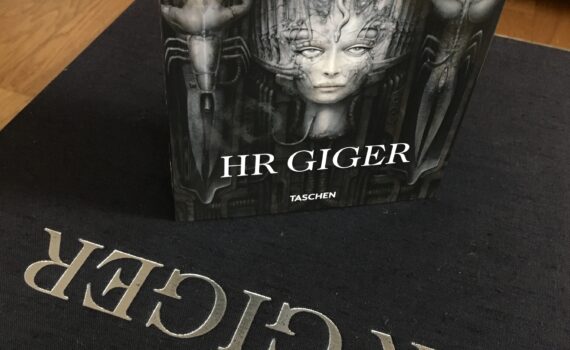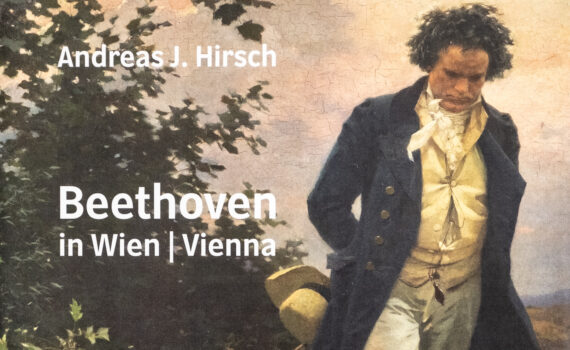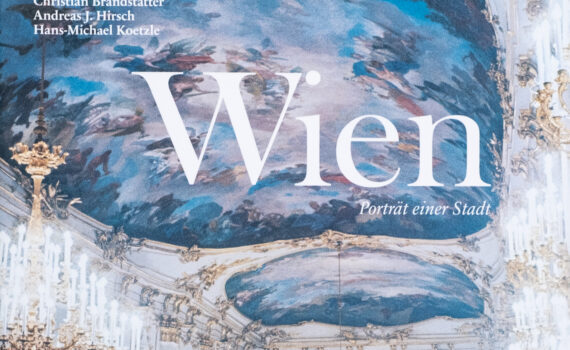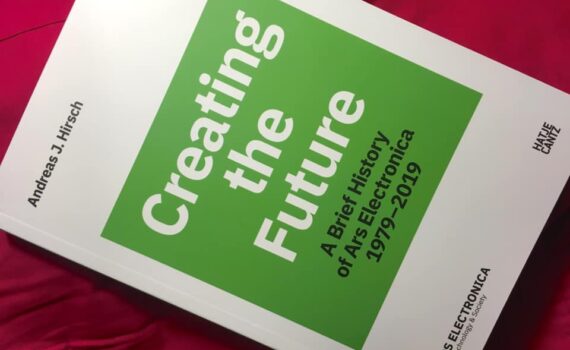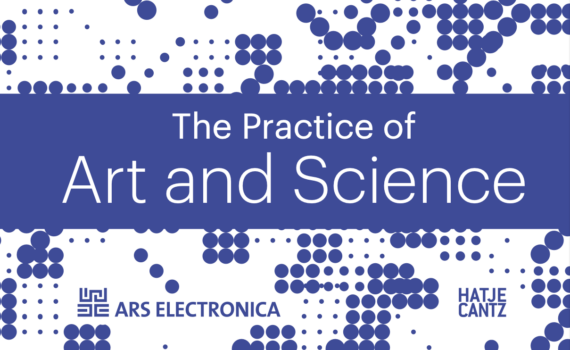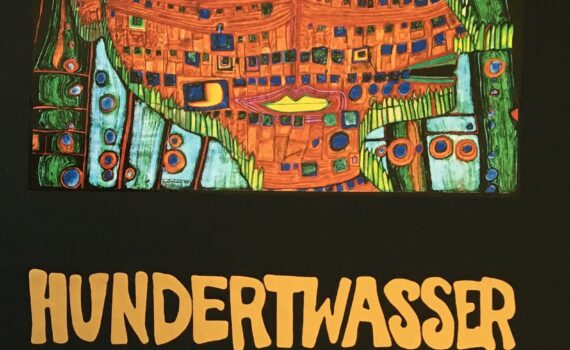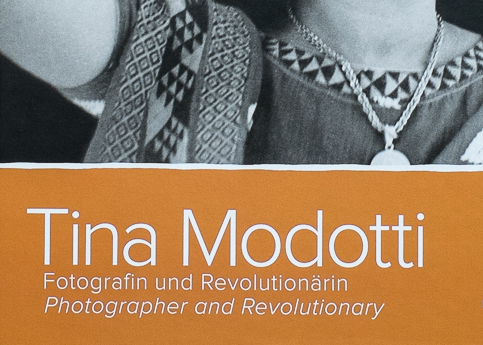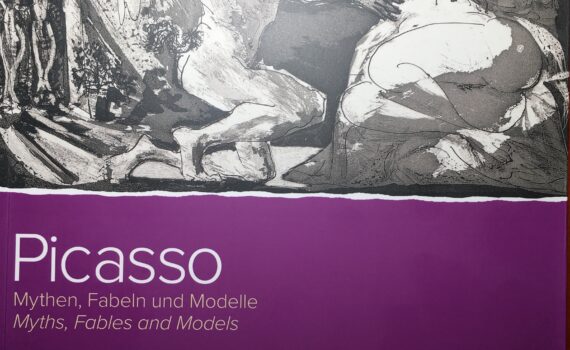A book with photographs and lyrics by Andreas J. Hirsch The Story of the Book While photographing at an old villa from the late fin de siècle on the hills above Vienna in 2016, in the final months before its demolition, Andreas J. Hirsch immerses himself in memories from the years of his youth in the 1970s, when he was a regular guest at that house. Combining photography and poetry, he reconnects with his early encounters with literature and music, reflecting on the transformations and experiences involved with coming of age, all interwoven with the distinct character of that very house, which is about to vanish. “Walking In Your Sleep” is an ode to collective and personal “lost time” as […]
BOOKS
“Reden wir über Fotografie (Let’s Talk About Photography). Honored having been entrusted with the editorship of this new book by the distinguished photo historian Hans-Michael Koetzle. The German Photographic Society (DGPh) honored Koetzle in October 2022 with their Cultural Award for his contributions to photography. The book contains essays and interviews by Koetzle from four decades and is published by KEHRER Verlag, Heidelberg.” Andreas J. Hirsch, editor From the announcement on the publisher’s website: “As an author and curator, the photo historian Hans-Michael Koetzle draws on countless personal encounters and extensive conversations with the great personalities of photography, as well as on meticulous archival research. He always keeps an eye on the contemporary historical background and cultural-historical context. His books, […]
“Hundertwasser in New Zealand is a richly illustrated and accessible account of the artist’s love of Aotearoa, his interaction with the people and land, and the influence these had on his work. In superb, lucid prose, eminent curator and writer Andreas J. Hirsch outlines the key stages of the artist’s life and his trajectory in New Zealand — including chapters on his commitment to nature, the Regentag in Aotearoa, and the art, philosophy and architecture he created here.” From the Media Release of: Andreas J. Hirsch, Hundertwasser in New Zealand – The Art of Creating Paradise, Oratia Books, Auckland, New Zealand, 2022 / Edited by The Hundertwasser Non Profit Foundation Vienna for the Hundertwasser Art Centre with Wairau Māori Art […]
“HR Giger created his own mythology .., encoding it into his paintings like DNA. In his work, he created a pictorial history that will be read as myth in a future whose proximity or distance we cannot yet ascertain. Until then, Giger’s art tell us something about a possible future of humankind that we can only surmise from the changes taking place in ourselves.” Andreas J. Hirsch, Chapter III – A Restless Classic, in: Hans Werner Holzwarth (ed.) / Andreas J. Hirsch (author), HR GIGER, Taschen, Cologne, 2016/2021
“It is an institution like no other, with an eventful history of 25 years now behind it. Compared with the common academic or industry research and development lab, this unit is rather small, comprising a staff of a mere three to five dozen people. It is neither an academic institute nor a corporate department, but a hybrid of artistic atelier and research laboratory. And there is a special third element, a philosophical and profane form of modern “alchemy,” which allows for the team at the “Futurelab” to also be considered as “Alchemists of the Future.” In fact, the people working there embody that fruitful dialogue between art and science, which often leads to astonishing and unconventional results. An ongoing dialogue […]
“A phantom is roaming around the world, visible at certain points, but mostly hidden from plain sight, moving stealthily into every area of life and work, and into every private recess. It comes in the guise of the epitome of progress, promising increased efficiency and profit to some, absolute control and power to certain others, and commodities to the masses. Some see it as the harbinger of doom for humankind, a Pandora’s box of self-destruction now opened and impossible to close again. Artists are attracted by this phantom, begin exploring its profoundly alien behavior, and experience its invasion of even the most exclusive realms of artistic creation, so far deemed to be one of the last reserves of what makes […]
“Life and work of Ludwig van Beethoven are surrounded by a myriad of legends and fictitious stories, of heroic and idealistic accounts and attempts to possess him. Beethoven’s lifetime at the turn of the 18th to the 19th century may – a good two hundred years later – seem alien and remote, and yet a lot of it might seem surprisingly familiar and timeless today. Persistent and serious research as well as courageous and inquisitive artistic approaches shed more and more light on Beethoven’s life, opening up new avenues to his music.” Andreas J. Hirsch (author and photographer), Beethoven in Vienna, Edition Lammerhuber, Baden / VBW, Vienna, 2019 Taking the Theater an der Wien as a starting point, the author […]
“The invention of photography was also quickly picked up in the Biedermeier idyll of Vienna. As early as 1839, Louis Jacques Mandé Daguerre sent from Paris some of his first images to Metternich, who showed them to the emperor and had them exhibited in the Art Academy. Metternich dispatched the physicist Andreas von Ettingshausen to Paris. Ettingshausen took photography lessons from Daguerre and acquired a Chevalier camera in Paris. The oldest known photograph of Vienna, which shows Michaelerplatz, originates from him. From this point on, the transformation of the city has been recorded in a burgeon ing production of photographs. The first fast portrait lens, made according to the precise calculations of Hungarian mathematician Josef Petzval, was produced by Viennese […]
“In 1979, long before anyone started speaking about a ‘digital revolution,’ in the unlikely setting of the small industrial town of Linz in Upper Austria, close to the Iron Curtain, three men—the director of a television station, a musician, and a scientist, who also wrote science fiction—launched a visionary festival for art, technology and society, giving it the Latin name ‘Ars Electronica.’” From: Andreas J. Hirsch, Creating the Future — A Brief History of Ars Electronica 1979–2019, Ars Electronica, Linz / Hatje Cantz, Berlin, 2019 “Creating the Future – A Brief History of Ars Electronica” follows the history of Ars Electronica from the pioneering days of its inception through the turbulent times at the advent of the digital revolution up […]
“Encounters of art and science, or, more precisely, of artists and scientists, have enjoyed rapidly growing interest and attention in recent years. The romance of art and science has a long history, albeit a mixed one. Leonardo da Vinci (1452–1519), the artist and polymath active in the Florence of the Renaissance, still serves as the prominent example for the enormous creative potential flowing from the interactions of art and science. Since then science has been splitting up into numerous paths of ever deeper specialization, seeking knowledge within reductionist paradigms, and has largely abandoned free science in favor of research inside large organizations able to afford and maintain the ever larger and more refined instruments needed for it. Art—at the price […]
Soil Lives ! (German: Boden lebt!) The Live and Work of Annie Francé-Harrar Andreas J. Hirsch (Author) Language: German Kataloge des Oberösterreichischen Landesmuseums, Linz, 2016
“The time is ripe for a renaissance of Friedensreich Hundertwasser. Born in Vienna as Friedrich Stowasser (1928—2000), this painter was among the most interesting and original protagonists of the international art avantgarde of the 1950s and 1960s. In the 1970s he went on to join the ranks of the twentieth century masters of graphic art, alongside Pablo Picasso, Joan Miró or Salvador Dali. In the mid-1980s he became one of the world’s leading designers of a form of architecture catering to the needs of man and nature in opposition to the mainstream.” Andreas J. Hirsch, The Art of the Green Path — Hundertwasser’s Renaissance, first published in: Andreas Hirsch (ed.), Hundertwasser — The Art of the Green Path, Prestel / […]
“Perhaps it was her compassion, her passionate altruism that was the essence of her life and her work as a photographer. Perhaps it was her compassion that made her a true revolutionary. And perhaps that is why ultimately, her work as a photographer escapes the aura of being fragmentary and incomplete, and appears timeless — because the compassion at its core prevails beyond all constraints of time and place.” From: Andreas J. Hirsch, In Light and in Darkness — Thoughts on Tina Modotti, first published in: Andreas Hirsch & Reinhard Schultz (eds.), Tina Modotti – Photographer and Revolutionary, 2010, KUNST HAUS WIEN Exhibition “Tina Modotti – Photographer and Revolutionary” — 1 July — 7 November 2010, KUNST HAUS WIEN, Vienna, […]
Pablo Picasso “ .. we see Picasso sitting in his studio in the dark of night, a studio that for him is the Corrida Arena under the blazing sun, the arena in which he works indefatigably on the myth while the myth, at the same time, works in him — not although, but precisely because, he fuses it with his own biography. We hear him calling for Rembrandt’s deepest black, we see him focus on his model with the concentrated desire that the years have distilled into the painter’s perfect gaze, like the faun reaching for the sleeping woman in the light of the afternoon.” From: Andreas J. Hirsch, The Oscillating Self-Image in the Myth, first published in:Andreas Hirsch (ed.), […]
Aspects of Radio as Art “While the death of radio as a mass medium is once again being predicted as imminent, recent developments in transmission technology underline what has long been evident: radio is not about the transmission of sound, but of signal. After over a century of innovation, appropriation, and mutation, radio is now being re-invented to become what it has essentially always been – a communications space in the widest possible sense. “Re-Inventing Radio” seeks to explore this space by examining the way in which artists have interacted with radio and other communications media. Radio is commonly understood as the familiar, ubiquitous, broadcast medium dissemininating music, information and entertainment. But this is only one “radio”. “Re-Inventing Radio” looks […]



